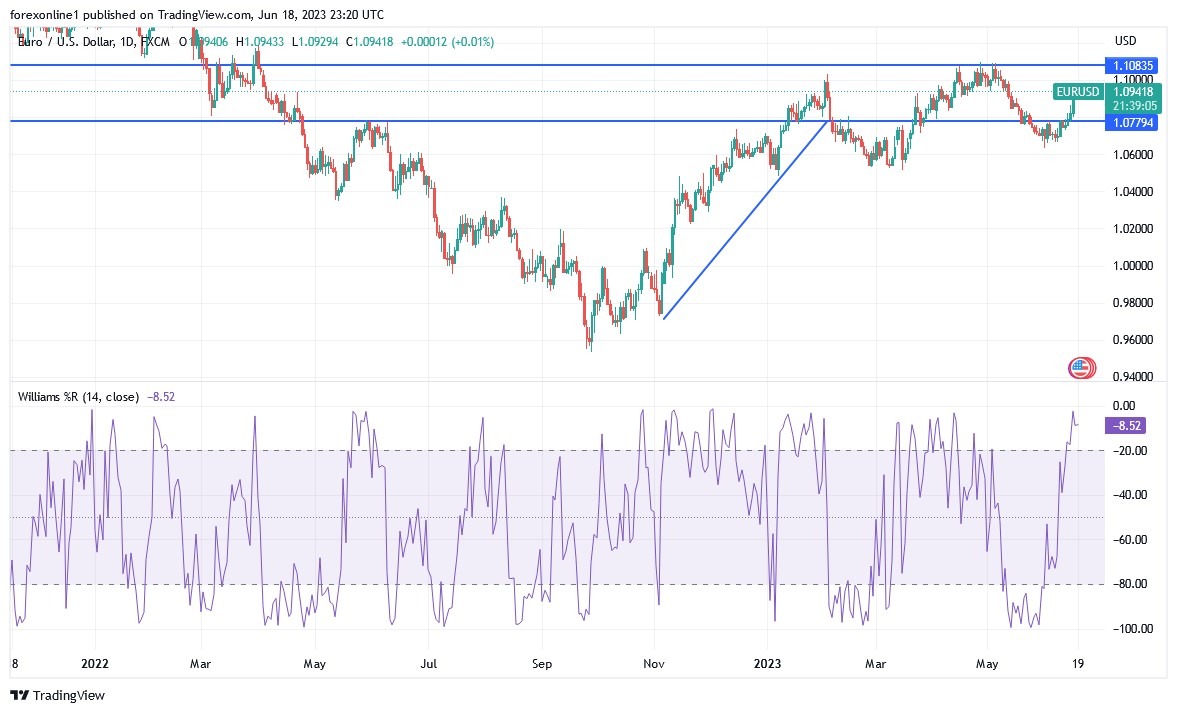- By the end of last week's trading, the euro traded relatively stable against the dollar, after significant gains on Thursday.
- The gains of the euro against the dollar, EUR/USD, extended to the resistance level 1.0970, its highest in more than a month.
- It settled at the beginning of this week's trading around the resistance level 1.0940.
In general, the picture of the eurozone economy was mixed this year, but after the region slipped into a technical recession and raised interest rates again, some investors turned to a state of nervousness in the economic landscape.
What does this mean for the euro?
For its part, the European Central Bank (ECB) raised interest rates by 25 basis points, raising the benchmark interest rate to 4%. The deposit rate and the marginal lending rate rose to 3.5% and 4.25%, respectively. Unlike the Fed, which left US interest rates unchanged at the June FOMC meeting, the ECB does not expect to hit the pause button.
Top Forex Brokers
Inflation has begun to decline but is expected to remain very high for a long time. The ECB said in its policy statement that the Governing Council is determined to ensure that inflation returns to its medium-term target of 2% in due course. But some investors may ignore the central bank's assurances as inflation falls again.
On the economic side, according to statistics agency EUROSTAT, the annual inflation rate fell to 6.1% in May, down from 7% in April. This matches market estimates. The rate of inflation was flat on a monthly basis, down from 0.6% in April. Core inflation, which cuts out the volatile energy and food components, slowed to 5.3% year-on-year, down from 5.6% and matching consensus estimates. The labor cost index fell to 5% in the first quarter from 5.6%. But this was much higher than the market expectation of 3.3%. Annual wage growth also eased to 4.6% in the January-March period, down from 5% and above expectations of 3.3%.
In the same week, the ZEW Economic Sentiment fell to -10.0 in June, down from -9.4. Industrial production rose 1% month over month in April, up from -3.8% in March. On a yearly basis, industrial output rose just 0.2%.
“In the aftermath of the ECB meeting, the implied probability of a July hike jumped from 50% to 80%, sending the euro higher against EUR/USD,” wrote Ipek Ozkardiyskaya, senior analyst at Swissquote Bank. The currency pair broke through its 50-DMA and reached 1.0950, gaining more than 3% since the beginning of this month. The medium-term outlook remains bullish for the euro against the dollar due to the divergence between the hawkish European Central Bank and the overstretched Federal Reserve. The next upside target for the currency pair stands at 1.12.”
Elsewhere, EUR/JPY's rally gained momentum above the 150 mark as the Bank of Japan (BoJ) decided to do nothing about today's abnormally low interest rates, which looks even more anomalous when you consider that the rest of the major central banks are either hiking Or say they will raise. USD/JPY is back above 140 as traders see little reason to buy the yen when the BoJ's outlook remains unclear. He noted that some investors had at least expected a broader YCC policy of up to 1%, but the Bank of Japan had not bothered to make a change on this front.
Euro predictions against the dollar today:
According to the performance on the daily chart below, the upward shift in the EUR/USD currency pair continues. Testing the psychological resistance level 1.10 will be important for the bulls to control the trend. This may push the currency pair towards stronger ascending levels. On the other hand, it broke the support level 1.0840, a return to control the bears on the trend again. Today is an American holiday, and therefore trading will be in narrow ranges.
Ready to trade our daily Forex analysis? We’ve made this forex brokers list for you to check out.

